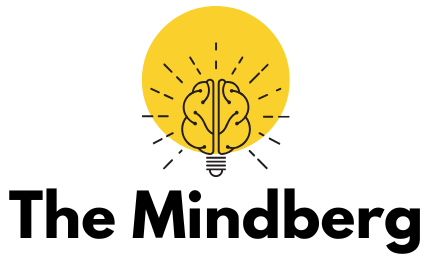Rapid Eye Movement (REM) Sleep Behavior Disorder is a rare but significant sleep condition that disrupts the normal boundaries between dreaming and physical movement. Typically, during REM sleep, the body enters a state of temporary paralysis to prevent individuals from physically acting out their dreams.
However, in individuals with this disorder, the paralysis fails, resulting in vivid and sometimes violent physical actions while they sleep. This disorder often goes unnoticed initially, as symptoms may be mild or sporadic, but its potential impact on sleep quality and safety necessitates a deeper understanding.
REM Sleep Behavior Disorder is not just a standalone issue; it is often linked to underlying neurological conditions, making it an essential topic for awareness. It predominantly affects middle-aged and older adults, with men being more frequently diagnosed than women.
Left untreated, this disorder can result in injuries to the affected individual or their sleeping partner, as well as signal the early stages of neurodegenerative diseases such as Parkinson’s. Understanding the disorder, its symptoms, causes, and treatment options is critical for early intervention and effective management.
What Is REM Sleep Behavior Disorder?
REM Sleep Behavior Disorder is a parasomnia characterized by the loss of normal muscle atonia during REM sleep. Instead of the body remaining immobile, individuals exhibit behaviors such as talking, shouting, kicking, or even punching, which correspond to the content of their dreams. This condition is distinct from sleepwalking, as it occurs during the REM stage of sleep rather than the non-REM stages.
The disorder may manifest as seemingly harmless movements or more dramatic actions, depending on the intensity of the dream. Individuals often recall their dream vividly upon waking, providing a clear connection between their physical actions and dream content. This unique characteristic sets REM Sleep Behavior Disorder apart from other parasomnias, emphasizing its specific link to the REM phase.
While the disorder can affect anyone, it is more commonly observed in older adults and is frequently associated with neurological diseases. Early recognition of these symptoms can lead to a timely diagnosis and help prevent injuries or further complications.
Recognizing the Symptoms
The symptoms of REM Sleep Behavior Disorder can vary widely in severity and presentation, but there are some hallmark signs to watch for. The most apparent symptom is the physical enactment of dreams, which may include talking, yelling, or making purposeful movements. These actions can range from mild gestures to violent thrashing, posing risks to the individual and their sleeping partner.
Another notable symptom is the recall of vivid and intense dreams that align with the physical movements observed during sleep. Unlike sleepwalking or other parasomnias, individuals with this disorder often have clear memory of their dream content. This connection helps differentiate REM Sleep Behavior Disorder from other sleep disturbances.
Bed partners are often the first to notice symptoms, as the individual with the disorder may remain unaware of their behaviors. Reports of disrupted sleep, accidental injuries, or fear of sleeping due to unpredictable actions are common among those affected. Recognizing these warning signs is essential for seeking medical evaluation and preventing further harm.
Causes and Risk Factors
The exact cause of REM Sleep Behavior Disorder is not fully understood, but research has identified several contributing factors. Neurological conditions, such as Parkinson’s disease, multiple system atrophy, and dementia with Lewy bodies, are strongly associated with the disorder. In many cases, REM Sleep Behavior Disorder serves as an early indicator of these diseases, appearing years before other symptoms manifest.
Certain medications, particularly those that affect the brain’s chemical balance, can also trigger or exacerbate the disorder. Antidepressants, for example, have been linked to an increased risk of developing REM Sleep Behavior Disorder. Substance withdrawal, especially from alcohol or sedatives, may also contribute to its onset.
Age and gender are significant risk factors, with men over 50 being the most commonly affected group. However, women and younger individuals are not immune, particularly if other predisposing factors are present. Understanding these causes and risks can guide individuals toward seeking professional evaluation and support.
Diagnosing the Disorder
Diagnosing REM Sleep Behavior Disorder requires a comprehensive evaluation by a healthcare provider. A detailed medical history and symptom description are critical first steps. Physicians often rely on input from bed partners, as they provide valuable insight into the nocturnal behaviors exhibited by the affected individual.
Polysomnography, or an overnight sleep study, is the gold standard for diagnosing REM Sleep Behavior Disorder. This test monitors various physiological parameters, such as brain activity, muscle tone, and breathing patterns, during sleep. The presence of muscle activity during REM sleep confirms the diagnosis.
In some cases, additional tests may be conducted to rule out other sleep disorders or identify underlying neurological conditions. Early diagnosis is essential for initiating appropriate treatment and addressing any associated health risks.
The Impact on Health and Daily Life
REM Sleep Behavior Disorder can significantly affect both physical health and daily functioning. The risk of injury during sleep is one of the most immediate concerns, as individuals may harm themselves or their sleeping partners unintentionally. Falls, bruises, and even fractures have been reported among those with severe symptoms.
The disorder also disrupts sleep quality, leading to excessive daytime fatigue, irritability, and difficulty concentrating. Over time, these effects can impair professional performance, personal relationships, and overall quality of life. The psychological impact of living with an unpredictable and potentially dangerous condition can further exacerbate stress and anxiety.
Additionally, the strong association between REM Sleep Behavior Disorder and neurodegenerative diseases highlights its role as a potential early warning sign. Addressing the disorder promptly not only improves immediate safety but may also facilitate early detection of underlying conditions.
Treatment Options
Effective management of REM Sleep Behavior Disorder typically involves a combination of lifestyle modifications, medication, and safety precautions. Clonazepam, a benzodiazepine, is the most commonly prescribed medication for reducing nocturnal behaviors. Low doses are generally effective and well-tolerated, making it a cornerstone of treatment.
Melatonin, a natural sleep hormone, is another option for managing symptoms. It helps regulate the sleep-wake cycle and may reduce the intensity of physical movements during REM sleep. In some cases, a combination of medications may be necessary to achieve optimal results.
Implementing safety measures in the bedroom is crucial for preventing injuries. Removing sharp objects, using padded furniture, and placing barriers around the bed are practical steps to enhance safety. Lifestyle changes, such as reducing stress, avoiding alcohol, and maintaining a consistent sleep schedule, can further support treatment efforts.

